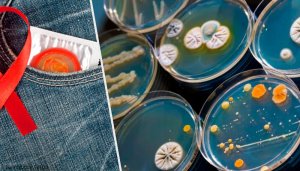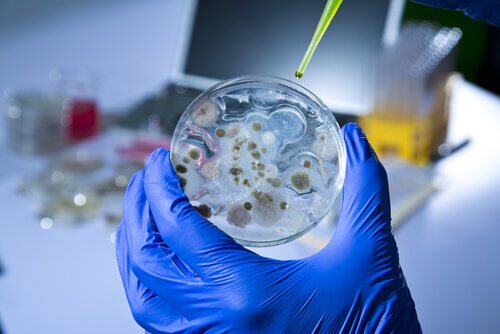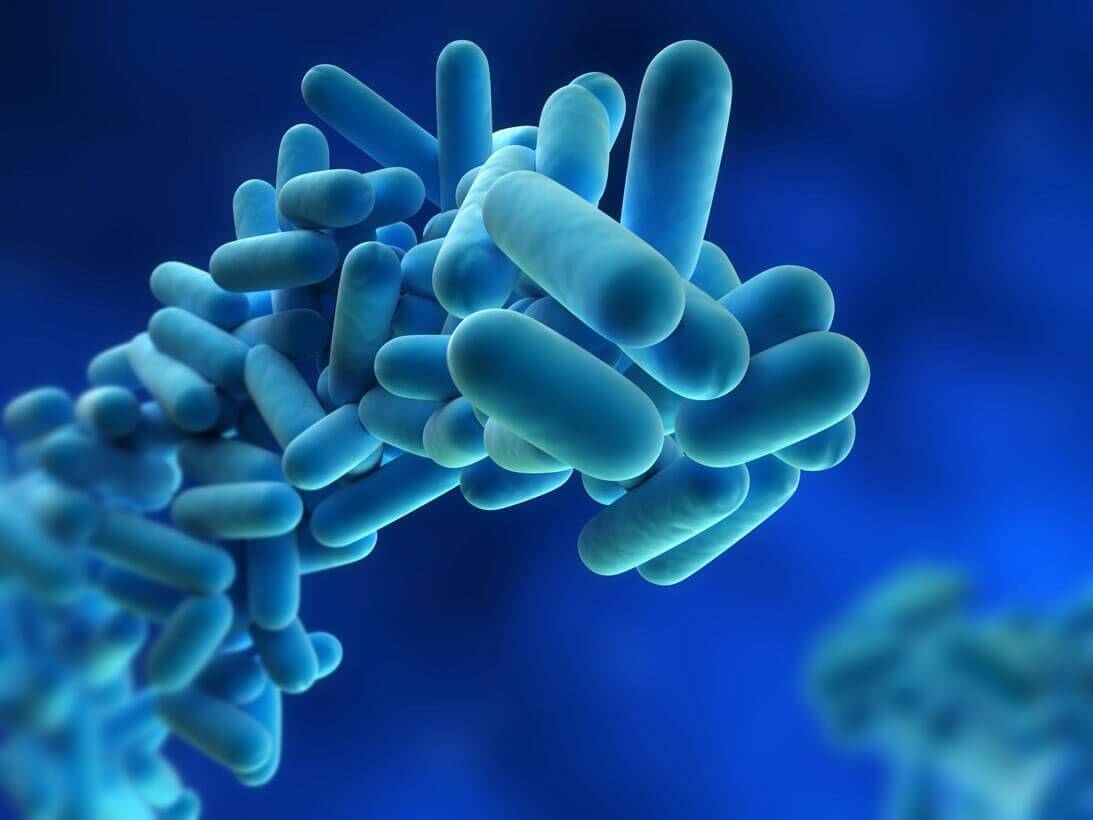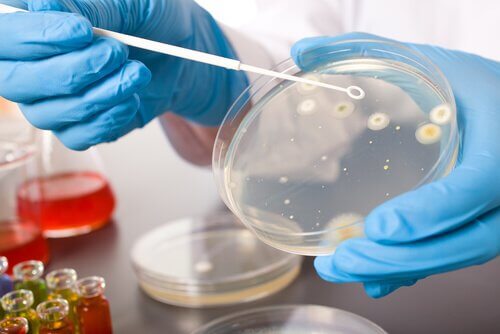11 Sexually Transmitted Diseases You Need to Know About


Written and verified by the psychologist Bernardo Peña
Sexually transmitted diseases (STDs), commonly known as venereal diseases, are usually contracted through sexual contact with an infected person. The organisms that cause these diseases are passed on from one person to another through blood, semen, vaginal fluids, and other bodily fluids.
In addition, these ailments can be transmitted by a mother to her child during pregnancy or during childbirth. Likewise, they can be passed on through blood transfusions or the use of shared needles that are contaminated.
These illnesses can be contracted from people who look healthy and who don’t know they’ve been infected. This is because sometimes people can be asymptomatic.
Sexual activity is one of the causes of the spread of many diseases. However, it’s possible to contract a disease without having sexual relations. While it’s true that latex condoms (prophylactics) lower the risk of contracting and spreading sexually transmitted diseases, it doesn’t completely eliminate it.
Even with the risks involved, many people don’t take any measures to protect themselves. On top of this bad habit, there’s a lack of education about most STDs, and how they’re spread and transmitted.
Today, we want to give you some more helpful information.
Symptoms of STDs

STDs, or venereal diseases, appear with a series of symptoms or signs that can sometimes go unnoticed. Occasionally, someone will find out when there’s a complication or when their partner is diagnosed.
In general, some symptoms include:
- Sores or lesions on the genitals, rectum, or even on the mouth,
- Abnormal discharge from the penis,
- Stinging or pain when urinating,
- Vaginal bleeding,
- Pain during sexual intercourse,
- Unusual foul-smelling and yellowish vaginal discharge,
- Skin rash on feet, hands, and torso,
- Abdominal pain,
- Groin pain as a result of swollen lymph nodes,
- Stinging, irritation, inflammation, and pain in the penis, vagina, anus, and vulva,
- Pain and irritation in the genitals,
- Genital warts,
- Pubic louse, aka crabs or pubic lice (parasites),
- Fever,
- Body pain,
- Blemishes or rashes on or around the genitals,
- Inflammation of the liver (hepatitis A, B, C, D),
- Bleeding between periods or during sex,
- Lower abdominal pain,
- Irritated urethra (tube from which urine comes out).
Many of these symptoms can stem from other diseases that aren’t sexually transmitted. That’s why it’s important to get tested to be sure which condition is causing your symptoms. It’s important to emphasize that these symptoms can appear within days or years of having contracted a disease, depending on your body.
Read up on: 6 Questions You Should Ask Your Gynecologist
When to consult a doctor
- If you present signs or symptoms of STDs.
- If you’re a sexually active person and suspect you’ve been exposed to an STD.
Causes of sexually transmitted diseases (STDs)

STDs can be caused by different types of microorganisms, such as:
- Trichomoniasis parasites: lice, scabies;
- Bacteria: gonorrhea, chlamydia, syphilis;
- Viruses: genital herpes, human immunodeficiency virus (HIV), human papillomavirus (HPV), and hepatitis B and C
When STDs are caused by parasites and bacteria, they can be treated with antibiotics. However, there is no cure for those that are caused by a virus.
Any sexually active person can contract a sexually transmitted disease. However, there are factors that increase a person’s risk, such as:
- Unprotected sexual relations; unprotected vaginal or anal penetration with an infected person,
- Improper use of condoms or prophylactics,
- Oral sex with a condom or dental dam,
- Sexual relations with multiple partners,
- Having contracted an STD in the past increases the chances of getting another STD,
- Forced sexual relations or rape,
- Use and abuse of drugs and alcohol; these substances remove your inhibitions and can lead to risky activities,
- Sharing needles increases the chances of contracting an STD,
- Being a teenager. At this age, the cervix is immature and formed by cells that are constantly changing. This makes a person more vulnerable to STDs.
Did you know?HIV/AIDS Vaccine Soon to Be Tested
How to decrease your risk of contracting an STD
- Use condoms.
- Avoid frequently changing partners.
- Use condoms or other birth control methods appropriately.
- Get tested before having sexual relations with new partners.
- Get vaccinated.
- Avoid alcohol and drugs.
- Communication. Talk with your partner before engaging in sexual activity.
- Educate children.
- Use condoms for oral sex on a male. Use a dental dam for oral sex on a female.
The most common sexually transmitted diseases (STDs)
1. Chlamydia

Chlamydia is the most common bacterial infection.
It’s passed on through vaginal, oral, and anal sex. It can also be spread by sharing sex toys, or from mother to child during pregnancy and childbirth.
Generally, no symptoms appear, and it can affect the urethra, rectum, cervical cells, and in some cases, the eyes and throat. In some instances, it can lead to infertility.
2. Gonorrhea or “the clap”
Gonorrhea is a sexually transmitted bacterial infection. It affects the urethra, cervix, rectum, anus, and throat.
This infection can cause severe problems in babies during pregnancy. It can also cause infertility.
3. Syphilis
Syphilis is a highly lethal bacterial STD.
It’s usually transmitted through vaginal, oral, and anal sex. However, it can also be spread through shared sex toys, blood transfusions, and contact with an infected person’s sores. It can also be passed on from mother to child during childbirth.
4. Genital herpes

The herpes simplex virus causes genital herpes. It’s spread through direct contact of infected skin during oral, vaginal, and anal sex. Symptoms can appear years after contracting the virus.
There is no cure, but its symptoms are treatable.
5. Human immunodeficiency virus (HIV)
The human immunodeficiency virus infects and destroys immune system cells, thereby reducing the body’s ability to protect itself from other infections and illnesses. It can be contracted through unprotected anal, vaginal, and oral sex or through shared infected needles.
Similarly, a mother can transmit it to her child during childbirth or by nursing if the mother is infected. What’s more, there’s a risk with blood transfusions.
There is no cure for HIV, and there’s a high chance of developing acquired immune deficiency syndrome (AIDS).
6. Acquired immune deficiency syndrome (AIDS)
AIDS is the result of being infected with the human immunodeficiency virus (HIV). AIDS attacks the body’s immune system. Usually, it’s transmitted through vaginal, oral, and anal sex. Many people who have it don’t have symptoms, while others have symptoms similar to those of the flu.
AIDS is a deadly and incurable STD. However, antivirals can be used to counter the disease and prolong an infected person’s life.
7. Trichomoniasis

Trichomoniasis is a very common type of bacteria. Generally, it can be transmitted by sexual activity. It infects the cells of the vagina and the urethra.
It affects mostly sexually active young women. It’s spread through vaginal sex, sharing sex toys, or from mother to child during pregnancy.
Sometimes, symptoms don’t appear.
8. Condyloma (HPV)
Condylomas, or genital warts, are caused by the human papillomavirus (HPV).
It’s spread through oral, vaginal, and anal sex, as well as skin to skin contact with an infected person. The warts appear on the genitals and anus.
When left untreated, they grow and resemble cauliflower. This STD increases the risk of cervical cancer.
There’s no cure for HPV, but condylomas can be treated with medication and some can be removed surgically.
9. Candidiasis (yeast infection)
Yeast infections are caused by a fungus that lodges itself in a person’s skin, mouth, and genitals. It can be kept under control, but sometimes the fungus grows and causes this infection. Oftentimes, an infected person will have no symptoms.
Yeast infections can be spread through vaginal, anal, and oral sex, as well as through shared sex toys.
If you have this STD, it’s better to avoid tight clothing made of synthetic fabrics that don’t allow air to flow.
There is a greater risk of having yeast infections during pregnancy or if you have diabetes, HIV, or conditions that affect the immune system.
10. Pubic louse

Symptoms include skin irritation and inflammation. They can be removed using a special shampoo. In addition, bedding, clothing, and towels must be disinfected.
11. Hepatitis B
This dangerous disease is caused by a harmful virus that attacks the liver. It’s transmitted through oral, anal, and vaginal sex.
There are three types of hepatitis: A, B, and C. They can all be transmitted through sexual intercourse, but hepatitis B is most commonly transmitted this way. It can also be spread by exposure to blood through sharing needles and contaminated items.
Hepatitis B attacks the liver and can lead to cirrhosis, liver cancer, liver failure, and even death.
There is no cure for hepatitis B. However, the infection can be treated with medication. There currently is a vaccine that can bolster protection against the disease.
In conclusion, it’s critical to get tested, especially if you’ve had unprotected sexual relations or if you find out your partner has an STD.
All cited sources were thoroughly reviewed by our team to ensure their quality, reliability, currency, and validity. The bibliography of this article was considered reliable and of academic or scientific accuracy.
- Sexually Transmitted Diseases (STDs). Centers for Disease Control and Prevention. https://www.cdc.gov/std/general/default.htm#:~:text=Human%20Papillomavirus%20(HPV)%20Infection,can%20be%20prevented%20with%20vaccines.
- What causes sexually transmitted diseases (STDs) or sexually transmitted infections (STIs)? National Institutes of Health. https://www.nichd.nih.gov/health/topics/stds/conditioninfo/causes
- Understanding Sexually Transmitted Disease Prevention. WebMD. https://www.webmd.com/sex-relationships/understanding-stds-prevention
- Enfermedades de transmisión sexual (ETS). Mayo Clinic. https://www.mayoclinic.org/es-es/diseases-conditions/sexually-transmitted-diseases-stds/symptoms-causes/syc-20351240
- VIH y sida. MedlinePlus. https://medlineplus.gov/spanish/hivaids.html
- Candidosis vaginal. MedlinePlus. https://medlineplus.gov/spanish/ency/article/001511.htm#:~:text=La%20mayor%C3%ADa%20de%20las%20mujeres,no%20ocasiona%20infecci%C3%B3n%20ni%20s%C3%ADntomas.
- Hepatitis B. MedlinePlus. https://medlineplus.gov/spanish/hepatitisb.html
This text is provided for informational purposes only and does not replace consultation with a professional. If in doubt, consult your specialist.








